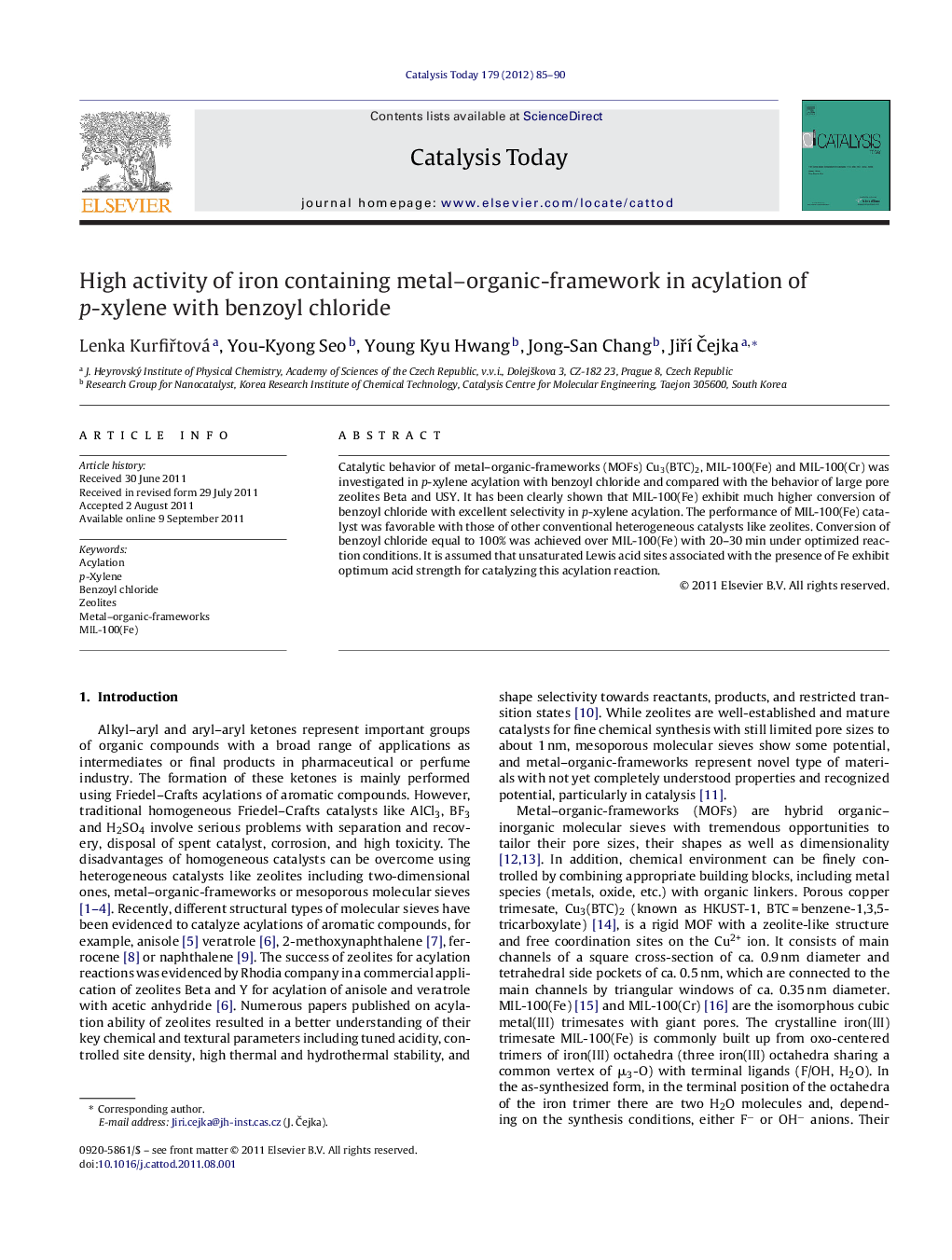| Article ID | Journal | Published Year | Pages | File Type |
|---|---|---|---|---|
| 55617 | Catalysis Today | 2012 | 6 Pages |
Catalytic behavior of metal–organic-frameworks (MOFs) Cu3(BTC)2, MIL-100(Fe) and MIL-100(Cr) was investigated in p-xylene acylation with benzoyl chloride and compared with the behavior of large pore zeolites Beta and USY. It has been clearly shown that MIL-100(Fe) exhibit much higher conversion of benzoyl chloride with excellent selectivity in p-xylene acylation. The performance of MIL-100(Fe) catalyst was favorable with those of other conventional heterogeneous catalysts like zeolites. Conversion of benzoyl chloride equal to 100% was achieved over MIL-100(Fe) with 20–30 min under optimized reaction conditions. It is assumed that unsaturated Lewis acid sites associated with the presence of Fe exhibit optimum acid strength for catalyzing this acylation reaction.
Graphical abstractSuperiority of MIL-100(Fe) () in p-xylene acylation with benzoyl chloride.Figure optionsDownload full-size imageDownload high-quality image (89 K)Download as PowerPoint slideFigure optionsDownload full-size imageDownload high-quality image (3 K)Download as PowerPoint slideHighlights► We show superiority of MIL-100(Fe) over Cu3(BTC)2 and large-pore zeolites in acylation of p-xylene. ► Total selectivity is reached over MIL-100(Fe) and Cu3(BTC)2 in p-xylene acylation with benzoyl chloride. ► Optimum strength of acid sites related to the presence of Fe in MIL-100(Fe) is most probably responsible for the high catalytic activity.
